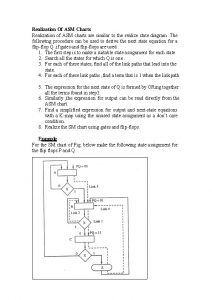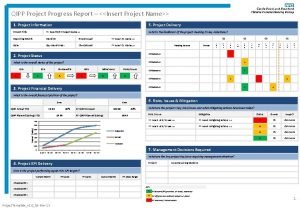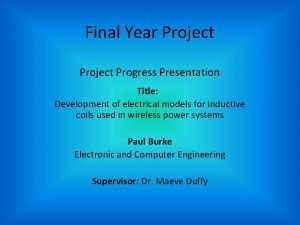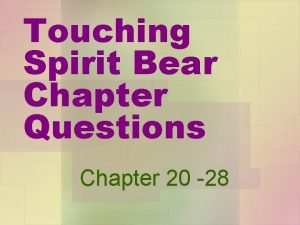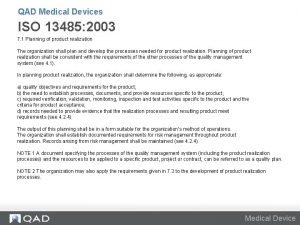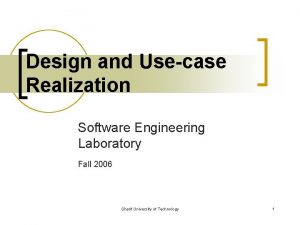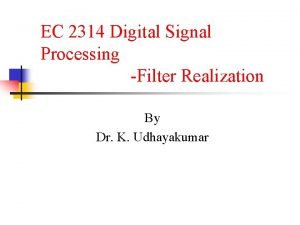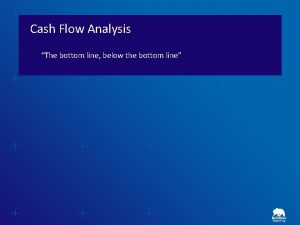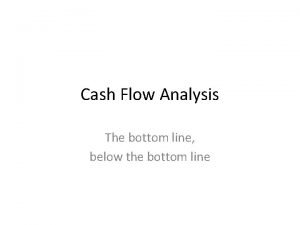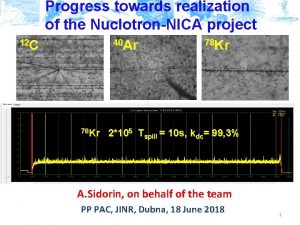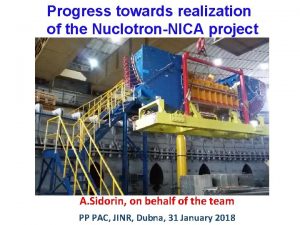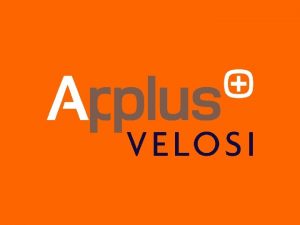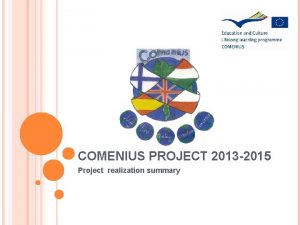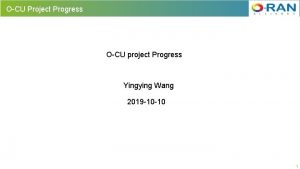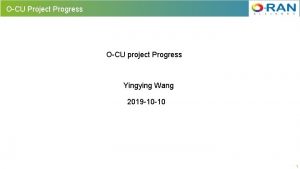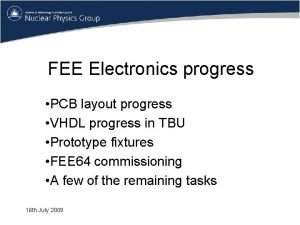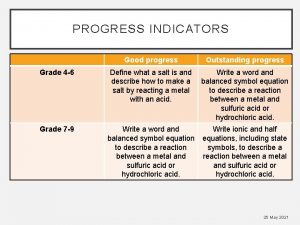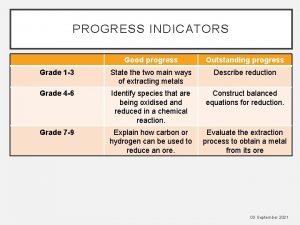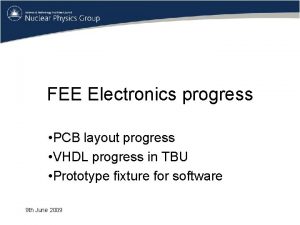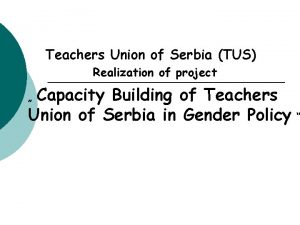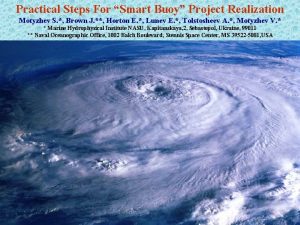Progress towards realization of the NuclotronNICA project A








































- Slides: 40

Progress towards realization of the Nuclotron-NICA project A. Sidorin, on behalf of the team PP PAC, JINR, Dubna, 16 January 2017 1

Contents • • • Nuclotron operation Preparation for BM@N HILac commissioning Preparation for Booster construction Progress in NICA collider design 2

Nuclotron operation • Statistics of runs #52, 53 • Machine development • Nearest plans 3

Statistics of operation Run #52 “technological” 02. 06 - 30. 06. 2016 (650 h) RFQ fore-injector commissioning (first stage) Optimization of SPI regimes Test of polarimeters: after LU-20, at Internal target, at extracted beam Test of the Booster power supply prototypes at SC load Test of White Rabbit segment at BM@N Improvement of beam line current stability 4

Statistics of operation Run #53 26. 10 -25. 12. 2016 (1400 h) SPI optimization, polarimetry Spin physics experiments Test of BM@N and MPD elements Test of the Booster power supply prototypes with beam acceleration Stochastic cooling, diagnostics, adiabatic capture 5

Run #53 A. Alfeev Time distribution Cooling, 7. 3% Tuning, 8. 7% Repairs, 4% Machine development NICA R&D (24%), Experiments Unexpected losses, 2. 5% 77. 6% Polarized, unpolarized deuterons, maximum energy of extracted beam 4. 6 Ge. V/u 6

Run #53 Routine operation of SPI and new fore-injector Polarized deuteron acceleration: Intensity 2 5*108 8 e 8 Deuteron Spin Structure experiment, internal target 7

Diagnostics: Q-meter Amplifiers, Filters, Detectors Flex. RIO ADC 18 bit DAC 14 bit Digitizer input output NI PXIe-1085 crate ( PXI system ) with modules: Flex. RIO Digitizer (developed at JINR) X and Z Impedance transformers NI PXIe-7975 R Flex. RIO module PXI-6733 High-Speed Analog Outputs NI PXIe-8135 2. 3 GHz Quad-Core PXI Express Controller Pick-up electrodes V. Volkov E. Gorbachev D. Monakhov RF Amplifier AR 800 A 3 A Kicker Z Kicker X 8

Q-meter: Measurements V. Volkov E. Gorbachev D. Monakhov Σ signal after injection, 5 bunches Q measurements ∆ spectrogram, X plane ∆ spectrum, X plane Run #53

Q-meter V. Volkov E. Gorbachev D. Monakhov RF and Pick-up signal synchronization Single-bunch excitation and measurements 3 D (Direct Diode Detection) Sensitivity down to 1 e 8 elementary charges Accuracy Q < 0. 0025 Diagnostic kicker 10

Diagnostics: bunch tomography V. Zhabitsky The particle distribution in the longitudinal phase plane E/E t/TRF 11

Diagnostics: bunch tomography V. Zhabitsky The particle distribution in the longitudinal phase plane a few ms after injection E 12

Plans 2017: Preparation for the Booster construction Start of BM@N experiment Two Nuclotron runs -February – March (SPI - polarized d (p), laser source Li, C) -November – December (KRION source, Kr, Ar) 2018: Booster assembly and commissioning 13

Preparation for BM@N • Installation of buncher at LU-20 fore-injector (under RF test at ITEP) • Adiabatic capture • Improvement of the beam line current stability • Test of White Rabbit (R&D for NICA synchronization system) 14

Adiabatic capture A. Eliseev, O. Brovko, V. Slepnev RF Voltage vs time Capture efficiency ~ 70% 8 e 8 6 e 8 15

Adiabatic capture RF Voltage vs time 8 e 8 A. Eliseev, O. Brovko, V. Slepnev Capture efficiency ~ 70% Routine operation during a few shifts with injection at magnetic field plateau + adiabatic capture 6 e 8 16

Preparation for BM@N, beam lines Nuclotron to BM@N beam line: 26 elements of magnetic optics: → 8 dipole magnets → 18 quadruple lenses Nuclotron Building 205 ~160 m BM@N 17

Improvement of the beam line current stability Run #52 V. Karpinsky Prototype of the current control unit Long-range relative current stability of 50 КВ source is better than 10 -3. Ripple at 300 Hz 0. 5… 1% (depending on output current). (Run #52) 18

New source at the beam line V. Karpinsky Run #53 BM@N dipole magnet (СП 57) ИП-600 -180 LM Invertor (Moscow) 600 A, 180 V, ripple 10 -4 19

New source at the beam line Run #53 First test 22 November, The stability was improved during the run ИП-600 -180 LM Invertor (Moscow) 600 A, 180 V, ripple 10 -4 20

HILac commissioning 3. 2 Me. V/u, Au 31+, 10 m. A V. Butenko, A. Govorov, V. Monchinsky Acceleration structure BEVATECH (Germany) Power amplifier TOMCO (Australia) Low level RF ITEP Diagnostics INR RAS Vacuum system Vaccum Praha October 2016 – carbon beam from laser source was accelerated up to design energy Building preparation, Ion source, LEBT, Lens power supply, … JINR 21

Preparation for Booster construction • Status of manufacturing the magnets • Power supply system 22

Design of the NICA booster magnets The Nuclotron-type design based on a cold, window-frame iron yoke and a winding of the hollow superconductor was chosen for the NICA Booster. Figure 1: View of the dipole magnet. 1 – lamination, 2 side plate, 3 - end plate, 4 – SC coil. Figure 2: View of the doublet of the lenses. 1 – halfcoil, 2 – half-yoke, 3 – beam pipe, 4, 5 – beam position monitors, corrector magnet

Main characteristics of the magnets Characteristic Dipole Lens Number of magnets 40 48 Max. magnetic field (gradient) 1. 8 T 21. 5 T/m Effective magnetic length 2. 2 m 0. 47 m Beam pipe aperture (h/v) 128 mm/ 65 mm Radius of curvature 14. 09 m Overall weight 1030 kg 110 kg

Facility for SC Magnets Assembling and Cryogenic Tests H. Khodzhibagiyan A. Kostromin The facility for assembling and cryogenic tests of superconducting magnets for NICA and FAIR projects was commissioned 28 November 2016.

Status of Manufacturing the Magnets • • H. Khodzhibagiyan Yoke of the Dipole Magnets – 27 or 68% A. Kostromin Coil of the Dipole Magnets - 16 or 40% Yoke of the Quadrupole Magnets – 48 or 100% Coil of the Quadrupole Magnets - 38 or 79% Yoke of the Corrector Magnets – 8 or 25% Coil of the Corrector Magnets - 2 or 6% Cryostat for magnets – 71 or 100% We plan to have 75% magnets at the end of 2017

The Booster power supply system V. Karpinsky Consists of three powerful units: -Main source 180 V, 12 k. A -Additional sources for quadrupole lenses 25 V, 400 A and 15 V, 300 A Three companies participate in the tender: -LM Invertor (Moscow) -EVPUas (Slovak Republic) -Frako-term (Poland) 27

The Booster power supply system V. Karpinsky Prototypes were tested Run #52: Operation on SC load Run #53: Beam acceleration: -LM Invertor -EVPUas Frako-term unit is transferred to Facility for SC Magnets Assembling and Cryogenic Tests 28

Progress in the NICA collider design • R&D for stochastic cooling • NICA synchronization system (Test at BM@N) • Dynamics optimization 29

Stochastic cooling (Run #53) Prototypes of amplifiers I. Gorelyshev, N. Shurkhno 2 - 4 GHz 30 W < 50 Sukhoy Gomel State University Belorussia 30

Stochastic cooling 2. 5 Ge. V/u, beam intensity ~4 e 8, Magnetic field plateau duration 30 – 300 s I. Gorelyshev, N. Shurkhno Time-of-flight cooling Pick-up sensitivity 2. 0 GHz One of 8 plates, 200 harmonics 31

Stochastic cooling 2. 5 Ge. V/u, beam intensity ~4 e 8, Magnetic field plateau duration 30 – 300 s I. Gorelyshev, N. Shurkhno Time-of-flight cooling Pick-up sensitivity 2. 75 GHz One of 8 plates, 200 harmonics 32

Stochastic cooling 2. 5 Ge. V/u, beam intensity ~4 e 8, Magnetic field plateau duration 30 – 300 s I. Gorelyshev, N. Shurkhno Time-of-flight cooling Pick-up sensitivity 3. 5 GHz One of 8 plates, 200 harmonics 41 harmonics were measured 33

Stochastic cooling I. Gorelyshev, N. Shurkhno Initial spectrum After 15 s 34

Stochastic cooling Smoothed (Gaussian filter) I. Gorelyshev, N. Shurkhno The gain << optimal After 15 s Diffusion is negligible Investigations of coherent term (friction force) as function of the system delay and beam energy 35

NICA synchronization system White Rabbit project was started to develop next generation control and timing network for CERN. Later FAIR facility joined the project. Currently, the project is a collaboration of many institutes and companies around the world. The project is both, open hardware and opens software. The projects aims at creating an Ethernet-based network with: low-latency, deterministic data delivery and network-wide, transparent, high-accuracy timing distribution. The White Rabbit Network (WRN) is based on existing standards, namely Ethernet, Synchronous Ethernet and PTP. Sub-nanosecond accuracy V. Slepnev

Synchronization: test at BM@N V. Slepnev Run #52 bld. 201 ~ 1. 5 km bld. 205 BM@N UT 24 VE — Universal Board with White Rabbit support and Power-over-Ethernet



Thank you for attention 40
 Asm chart for jk flip flop
Asm chart for jk flip flop Physical progress and financial progress
Physical progress and financial progress Qipp agenda
Qipp agenda Measuring project progress
Measuring project progress How to make final year project presentation
How to make final year project presentation Status progress report
Status progress report As cole carves the totem, what two questions haunt him?
As cole carves the totem, what two questions haunt him? Chapter 17 kite runner
Chapter 17 kite runner Iso 13485 product realization
Iso 13485 product realization Use case realization example
Use case realization example Self realization aristotle
Self realization aristotle Use case realization
Use case realization What is use case realization
What is use case realization Digital signal processing
Digital signal processing Cash realization ratio
Cash realization ratio Calculate time interest earned
Calculate time interest earned Cognitive provides various channels for self-realization.
Cognitive provides various channels for self-realization. Corbiran
Corbiran Hình ảnh bộ gõ cơ thể búng tay
Hình ảnh bộ gõ cơ thể búng tay Frameset trong html5
Frameset trong html5 Bổ thể
Bổ thể Tỉ lệ cơ thể trẻ em
Tỉ lệ cơ thể trẻ em Voi kéo gỗ như thế nào
Voi kéo gỗ như thế nào Tư thế worms-breton
Tư thế worms-breton Chúa sống lại
Chúa sống lại Các môn thể thao bắt đầu bằng tiếng đua
Các môn thể thao bắt đầu bằng tiếng đua Thế nào là hệ số cao nhất
Thế nào là hệ số cao nhất Các châu lục và đại dương trên thế giới
Các châu lục và đại dương trên thế giới Cong thức tính động năng
Cong thức tính động năng Trời xanh đây là của chúng ta thể thơ
Trời xanh đây là của chúng ta thể thơ Mật thư tọa độ 5x5
Mật thư tọa độ 5x5 101012 bằng
101012 bằng độ dài liên kết
độ dài liên kết Các châu lục và đại dương trên thế giới
Các châu lục và đại dương trên thế giới Thơ thất ngôn tứ tuyệt đường luật
Thơ thất ngôn tứ tuyệt đường luật Quá trình desamine hóa có thể tạo ra
Quá trình desamine hóa có thể tạo ra Một số thể thơ truyền thống
Một số thể thơ truyền thống Cái miệng nó xinh thế
Cái miệng nó xinh thế Vẽ hình chiếu vuông góc của vật thể sau
Vẽ hình chiếu vuông góc của vật thể sau Biện pháp chống mỏi cơ
Biện pháp chống mỏi cơ đặc điểm cơ thể của người tối cổ
đặc điểm cơ thể của người tối cổ
